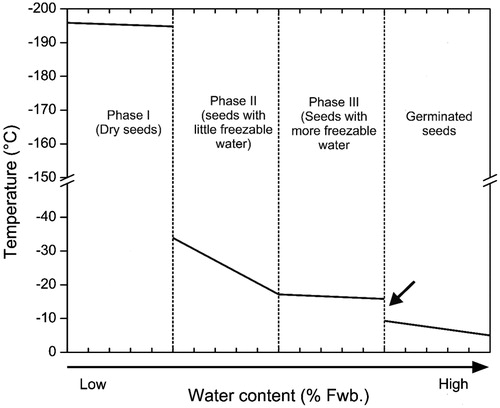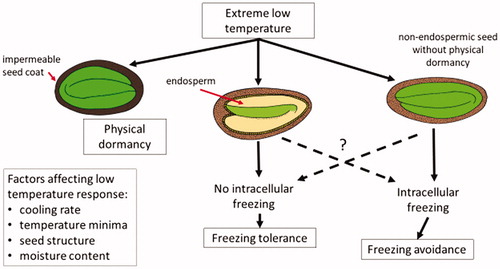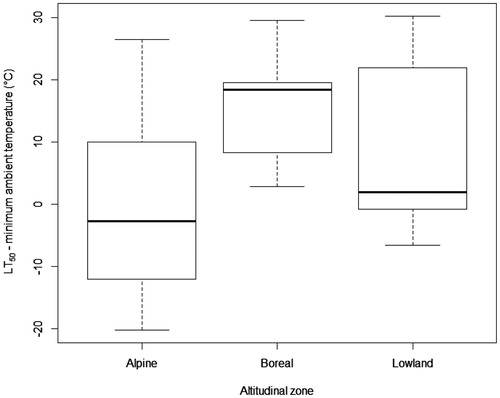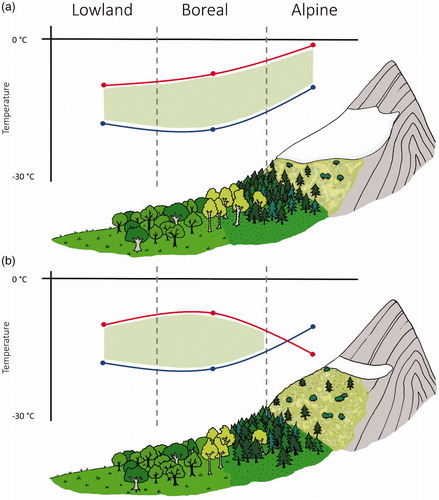Figures & data
Figure 1. Typical relationship between water content of seeds and temperature at which seeds incur mortality. Water content in each phase is species-specific. The amount of water increases from phase I through phase III, decreasing the freezing tolerance ability. In phase I, seeds do not have any freezable water and therefore survive low temperatures, even direct exposure to liquid nitrogen. Increase in water content leads to decrease in survival, thus seeds with little freezable water (phase II) do not survive ultra-low temperature but maintain viability when exposed to sub-zero temperatures. Seeds in phase III, i.e., fully imbibed but ungerminated, have mechanisms to survive exposure to sub-zero temperature. In radicle protruded seeds (phase IV), there is a sudden loss in freezing tolerance (indicated with an arrow).

Table 1. Species producing physical dormant (PY) seeds in alpine environments.
Figure 2. Hypothesized pathways of survival against low temperatures in alpine seeds. Three mechanisms of survival identified includes impermeable seed coat, freezing avoidance and freezing tolerance. Four factors that might affect the response of seeds are identified, signifying particular mechanisms relating to cooling rate, temperature minima, seed structure, and the moisture content of the seeds. For freezing tolerance, freezing is limited to extracellular regions or non-essential tissues. For freezing avoidance, supercooling delays the onset of intracellular freezing.

Table 2. List of species for which LT50 temperature is available and their distribution assessed on GBIF.
Figure 3. Difference between LT50 and minimum ambient temperature of seeds by taxa and grouped by altitudinal zone (Alpine n = 12, Boreal n = 6, Lowland n = 6). Each box shows the median, and lower and upper quartiles, the whiskers indicate the minimum and maximum values.

Figure 4. Hypothesized relationship between LT50 of seeds from lowland, boreal and alpine plant species (blue line) relative to the ambient minimum temperature associated with the same species (red line; see text for details). Figure (a) conveys the current conditions where snow cover maintains an ambient minimum temperature close to freezing in the alpine zone, (b) shows the decrease in ambient temperatures when snow cover has been lost. Green hatched area indicates the conditions where LT50 exceeds the ambient minimum temperature and seeds are therefore within the tolerable temperature range to survive; alpine species in figure b are exposed to temperatures beyond the tolerable freezing range.

